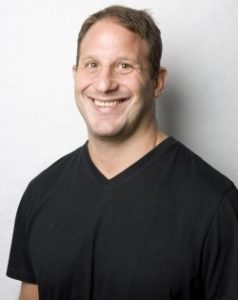Why Generosity Can Be A Competitive Advantage

In another of his trademark, thought-provoking articles, Greg Satell (aka Digital Tonto) discusses the competitive advantage of generosity. Some interesting findings here. This is another in our “Great Articles You may have missed” series.
How Can Generosity Be A Competitive Advantage?
Every age has its icons. The 60s and 70s had rock stars and beat poets. In the 80s and 90s, Wall Street traders, with Gordon Gekko as their patron saint, adopted “greed is good” as their mantra. More recently, Steve Jobs captured the zeitgeist with his relentless focus on creating products that were “insanely great.”
A common thread running through all of these is the underlying principle that it takes a certain ruthlessness, or at least some kind of creative insanity, to achieve an extraordinary level of achievement. That’s why I was surprised, when researching my book Mapping Innovation, to find exactly the opposite.
Those that I talked to, whose successes include not only building great companies, but also developing new cures for cancer, new computing architectures and even new technologies to store energy, were almost universally warm and low key. I was so struck that I did some further research and found that the stark contrast between myth and reality is no accident.
“OK, Boss, What’s My Assignment”
When Danny Hillis was a graduate student at the MIT Artificial Intelligence Lab he designed a new kind of parallel computer, which he called the Connection Machine. This computer had the potential to be far more powerful than traditional architectures. Sensing opportunity, Hillis rounded up financing for a new company he called Thinking Machines.
On the first day of operation, he was surprised by the arrival of an unusual visitor. “Richard Feynman reporting for duty,” the famous physicist and father of a classmate said. “OK, boss, what’s my assignment?” Hillis was so nonplussed that he had no idea what to do with him. So he sent him out to buy office supplies, which the Feynman did willingly.
After that, the iconic Nobel prizewinner seemed happy to take on any task. This held true whether it was designing routers and algorithms or picking up lunch and soldering circuit boards. No task was too far afield or too routine. He was, more than anything else, a member of the team, happy to help out where he could.
The same was true of many of those that I spoke to while researching my book. I was surprised at first to find that these incredibly accomplished people were as interested in my work as I was in theirs. When I sent sections to them to fact check, they replied not only with helpful suggestions, but sometimes with my typos corrected as well. No task seemed too sublime or too mundane for them.
In fact, this happened so often, I began to think of generosity as a key innovation skill.
Accessing Diverse Networks
Back in the 90s, researchers at Carnegie Mellon set out to find what made the difference between “star engineers” and everybody else. At first, they were puzzled. They wrote:
“Perplexingly, after two years, our data showed no appreciable cognitive, personal or psychological, social, or work or organizational differences between stars and non-stars.”
But as they dug further, some insights started to emerge. They found that star engineers had a knack for “knowing who knows,” who is most likely to have valuable information that could help them solve a problem. A similar study of the design firm IDEO found that great innovators essentially act as “brokers“, able to access a diverse array of useful sources.
A third study helps explain why knowledge brokering is so important. Analyzing 17.9 million papers, the researchers found that the most highly cited work tended to be mostly rooted within a traditional field, with just a smidgen of insight taken from some unconventional place. Breakthrough creativity, therefore, can be seen to occur at the nexus of conventionality and novelty.
This goes a long way to explaining why great innovators tend to be so pleasant. By being generous and curious about others, they are much more likely to build the kind of diverse networks in which they are likely to come across some odd piece of information that can lead to a breakthrough. Innovation needs combination.
Getting Ideas To Spread
Coming up with a pathbreaking idea is one thing. But getting it adopted is another. That was the problem that Ignaz Semmelweis ran into. By instituting hand washing at Vienna General hospital, he nearly eradicated the incidence of childbed fever and saved countless lives. However, he was unable to get the medical establishment to accept his idea. And it took another decade before the germ theory of disease became widely accepted.
As Sherwin Nuland explains in The Doctor’s Plague, a big part of the problem was Semmelweis himself. He didn’t format his publications clearly or collect data in a manner that would gain his ideas greater acceptance. Instead, he railed against the medical establishment and, perhaps unsurprisingly, received pushback. Most people are reluctant to accept the ideas of a jerk.
A more recent example is the Occupy Movement. With their message of “We are the 99%,” they galvanized likeminded people across the planet. Before long, there were protests in almost a thousand cities in 82 countries. Yet as effective as they were in rousing the faithful, they gained little traction with everyone else. And things died down within a few months.
(Getting Ideas To Spread And Stick!)
Compare that to the Otpor movement, in Serbia. Whereas Occupy was confrontational and, at times, arguably vulgar, Otpor took pains to project a friendly, good humored image and to control troublemakers at protests. Two years later, Otpor’s efforts culminated in the downfall of Slobodan Milošević, who had ruled their country with an iron hand.
Today Otpor lives on in the form of the Centre for Applied Nonviolent Action and Strategies (CANVAS), an organization that trains activists across the world. Their disciples read like a “who’s who” of democratic movements. They include Kmara in the Georgia Republic, Pora in Ukraine and the April 6th movement in Egypt that played a pivotal role in the Arab Spring.
The Sum of All Connections
In my research, I also found that it is devilishly hard to figure out who’s responsible for any significant innovation. For example, if you look at the Macintosh, you’ll find that Steve Jobs got most of his ideas from researchers at Xerox. Xerox based their work on that of Douglas Engelbart. He in turn got his inspiration from an article Vannevar Bush wrote in 1945.
Sun Microsystems co-founder Bill Joy once said, “no matter who you are, most of the smartest people work for someone else.” That’s true, but it doesn’t go far enough. To compete effectively today, we need to be able to access ecosystems of talent, information and technology that lie far beyond the bounds of our organizations. In effect, the best of everything lies somewhere else.
The good news is that digital technology allows us to access more ever before. But we still need to make the effort to reach out. In a networked age, competitive advantage is no longer the sum of all efficiencies, but the sum of all connections. So we need to work to design our organizations to widen and deepen those connections, rather than hamper them.
And it all starts with basic generosity and good intentions. Power no longer lies at the top of the heap, but at the center of networks. And you get there not by vanquishing rivals but through cultivating friends.
Over To You
 Do you have any thoughts around the ideal breeding ground for innovation?
Do you have any thoughts around the ideal breeding ground for innovation?
Certainly I, your Curatti editor, had my own say on this in the early days of Curatti. The above quote came from that article.
Perhaps something in it rings true to you? Please comment below.

Originally published as “Generosity Can Be A Competitive Advantage” on digitaltonto.com and republished here with permission.
Greg Satell is a popular writer, speaker and innovation advisor, whose work has appeared in Harvard Business Review, Forbes, Fast Company, Inc. and other A-list publications. You can find Greg’s blog at digitaltonto.com and on Twitter @Digitaltonto. His first book, Mapping Innovation: A Playbook For Navigating A Disruptive Age, was published by McGraw-Hill in May, 2017.
Image attribution: Copyright: ‘https://www.123rf.com/profile_lightkeeper‘ / 123RF Stock Photo

